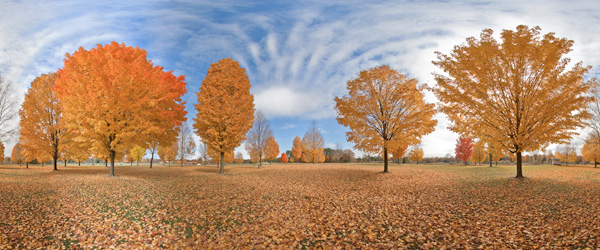
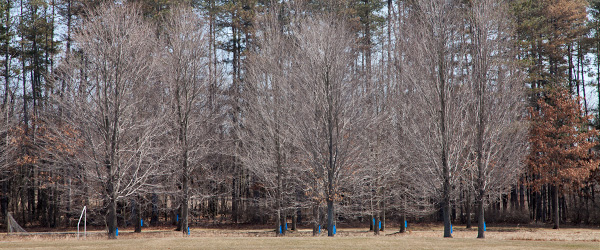
Sugar Maple trees at Hudson Mills Metropark in Dexter, Michigan. Bottom image show trees collecting sap in the spring.
Ever wonder how maple syrup is made? Well, I did. Luckily, just down the road from my house, is Hudson Mills Metropark and they have tours on the weekends in March to show you just how the process works. When I called to reserve a spot in one of the tours, I explained that I would like to take some photos of the process for my blog. The woman I spoke with told me that the tour would start in the Recreation Center at the park for an introduction, and that the rest of the tour would be outside. I asked if it was possible to have a peek behind the scenes to see how the syrup was made after the sap was removed from the trees. She said I would be able to see it all during the tour. I thought to myself, it’s all done outside? No fancy commercial kitchens to make the syrup. Interesting. Shows how little I knew about the process of maple sugaring.
I showed up for the noon tour along with about 30 others, where workshop instructor Jennifer Hollenbeck proceeded to talk about making maple syrup. In this area of Michigan, maple trees are tapped to capture the sap in the month of March, when the daytime temperature rises above freezing and drops below over night. “On a good day” Jennifer says, “you can get as much as a gallon of sap from one tree.” The park only collects about 10 gallons of sap per tree. To produce one gallon of maple syrup you would need approximately 40 gallons of sap.
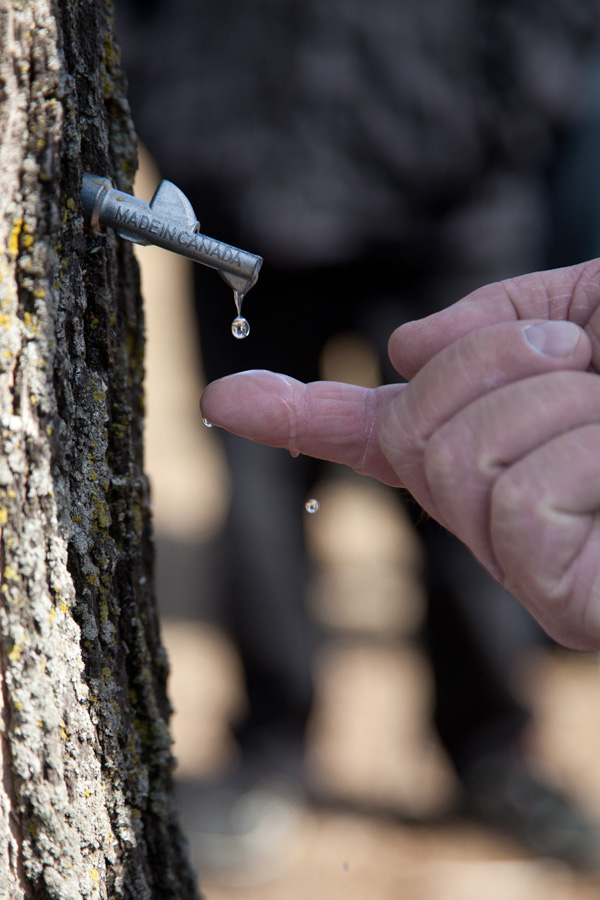
Sap dripping from a tapped maple tree.
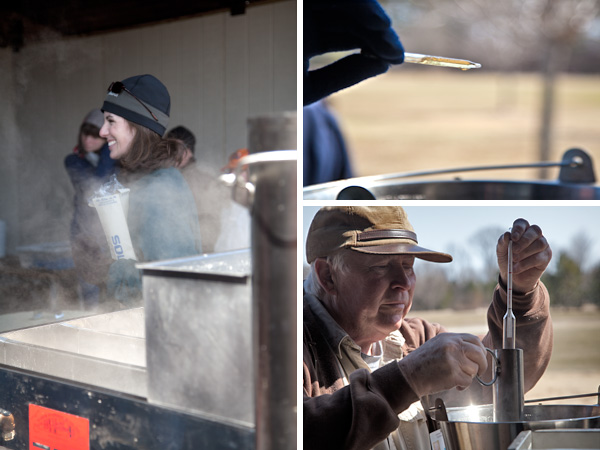
(Left) Hudson Mills Metropark workshop instructor, Jennifer Hollenbeck describes the process of taking sap and making it into maple syrup. (Right) Park volunteer Harry Richardson tests the sugar content of the sap with a hydrometer.
After a brief introduction about where maple syrup comes from, we headed outside, across a field to identify a sugar maple tree and, then, to tap it. It was sunny and about 40 degrees and, as soon as a hole was drilled, the sap began to drip quickly from the hole. A spiel or spout was tapped into the hole and a then a bag was hung from the spiel to capture the sap, but not before everyone had a chance to taste the sap dripping from the spout. It tasted like water. It should, after all it is 98% water and minerals and only 2% sugar. The kids, although thrilled to stick their hands under the dripping spout, seemed unimpressed with the flavor.
With nothing left to see at the tree, we headed over to a pavillion with a large outdoor fire place where sap was being boiled. Essentially, taking the sap and making it into syrup requires boiling the sap to remove the excess water. That’s it. Place a large shallow pan over a wood fire and boil, without burning, and that’s how you get pure maple syrup. I was kind of expecting more, but tickled to find out just how simple it is. I began to wish I had a sugar maple in my yard and sent Chris a text asking if we can plant a few sugar maples. Right after I send my text, Jennifer told us that the park sells kits to tap and capture maple sap and, with it, you get you very own sugar maple right there in the park! They help you tap the tree and then it’s all up to you to collect the sap. The cost of the kit and tree is $25 and, had it not been so late in the month, I would have done it. I think it would be such a cool thing to do if you had kids and enough room to have an outdoor fire.
I think next year I am going to take part in the oldest agricultural enterprise in the United States, maple sugaring. Something sweet to look forward to in February when it feels like winter will never end.
A pancake breakfast is offered at Huron Metro Park on the weekends in March.
Here are a few facts about maple syrup in Michigan.
- Michigan ranks 5th in maple syrup production in the United States.
- Economic contributions of the pure maple syrup industry to Michigan are nearly $2.5 million annually.
- Maple syrup, as an agricultural commodity, benefits Michigan farm markets.
- Maple syrup is one of the few agricultural crops in which demand exceeds supply.
- A gallon of standard maple syrup weighs 11 pounds and has a sugar content of 66 percent.
- The maple season in Michigan starts in February in the southern counties and runs well into April in the Upper Peninsula.
- In a conventional evaporator one cord of hard wood is required for every 25 gallons of syrup produced.
- Maple sap becomes maple syrup when boiled to 219 degrees Fahrenheit, or 7 degrees above the boiling point of water.
- Maple syrup is classified as one of nature’s most healthful foods.
- Michigan has a Maple Queen, who is selected each January, statewide.
For more information on making your own maple syrup you can go to Michigan Maple Syrup Association website. To find out more on maple sugaring at Hudson Mills Metropark, their weekend pancake breakfast or for a starter kit to make your own syrup, go to their website or call, 734-426-8211. There is still one weekend left to see the tour!
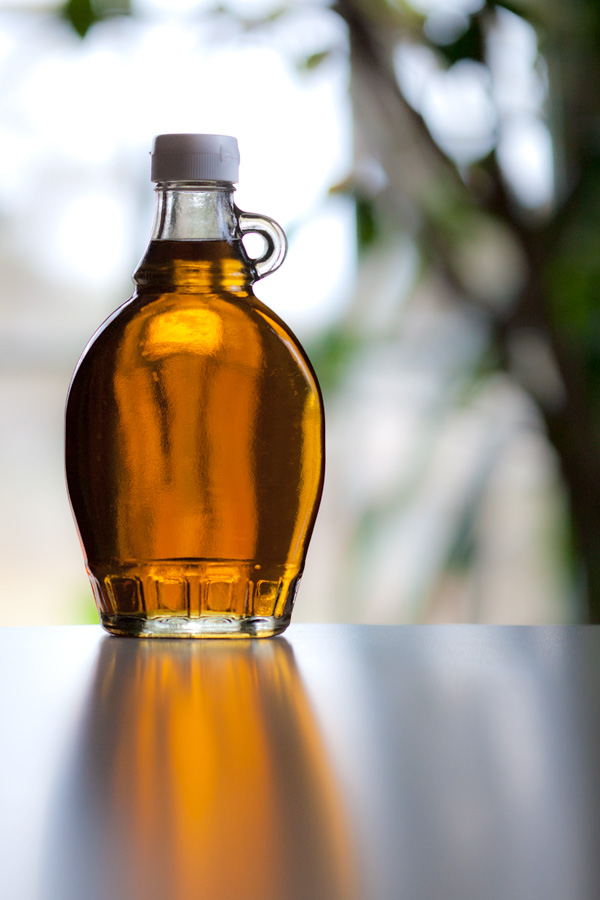
Pure Michigan maple syrup

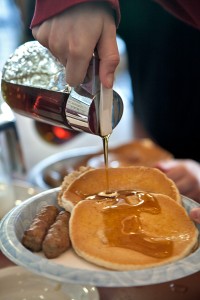
Comments are closed.